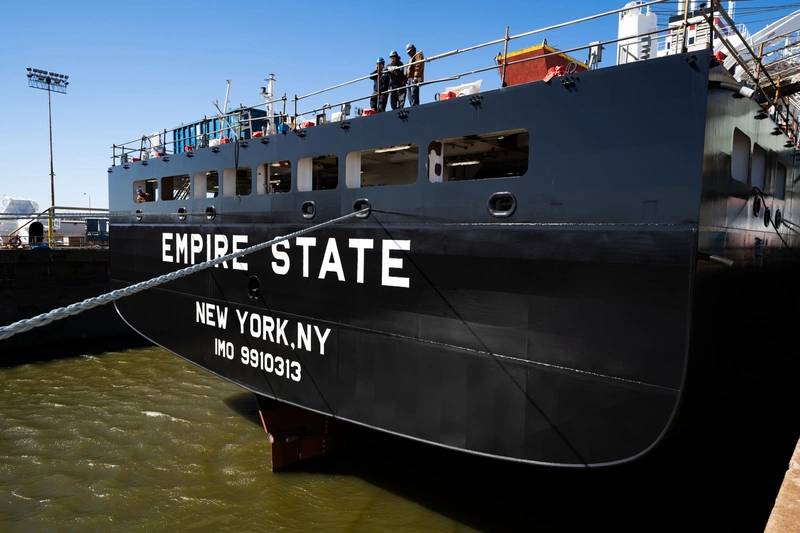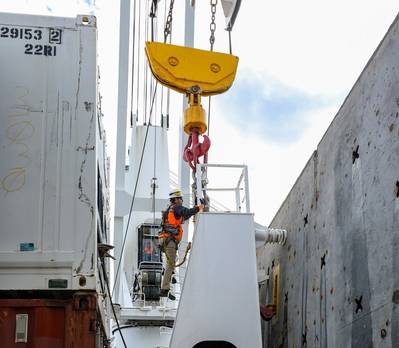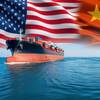Time to Meet the US Mariner Shortage Head On
We have a national and economic security crisis on our hands. It is time for Washington policymakers to stop dancing around the facts and looking for small fixes. The U.S. mariner shortage is real and it poses an unescapable threat not only to our ability to establish lines of communication to the U.S. warfighter, but also to our nation’s ability to project power through international trade.
Two Congressional hearings held on March 28 illustrate the challenge. First, General Van Ovost, Commander, United States Transportation Command (USTRANCOM) testified before the House Armed Services Committee (HASC) on the state of the command. General Van Ovost testified, “The health of Merchant Mariner Readiness requires continued assessment to ensure an adequately trained supply to crew our surge fleet while minimizing impacts to commercial industry. The supply of contract mariners is sufficient to meet the initial sealift surge when government reserve ships are activated but will be challenged with the ability to sustain crewing requirements over an extended period. The post-COVID recovery has highlighted significant workforce concerns to maritime stakeholders to include recruiting and retention.” Similarly, Maritime Administrator Phillips similarly testified before the HASC Subcommittees on Readiness and on Seapower and Projection Forces that, “[i]n a 2017 study, MARAD estimated that we are approximately 1,800 mariners short of the number of licensed and unlicensed mariners needed to operate the commercial fleet and the [Ready Reserve Force] in the event of a full mobilization exceeding 4-6 months. Based on MARAD’s meetings with the industry and maritime labor unions, it appears that the shortage may have worsened in the post-COVID work environment.”
To those of us in the maritime industry, none of this is news. The mariner shortage has been well-documented for years and, as virtually any U.S.-flag operator can confirm, it is becoming increasingly challenging to even crew U.S.-flag commercial vessels. At this point, the testimony of General Van Ovost and Administrator Phillips likely undersells the challenge. Even finding sufficient mariners to activate – let alone sustain – the entire Ready Reserve Force may be impossible. And yet, we are not seeing enough political action to address this critical shortage. Perhaps the threat remains too theoretical, but the vision of a deployed American armed forces member operating without a clear supply line to receive food, ammunition, and medical equipment should send shivers down the spine of any politician.
The question becomes, how can the government support industry in addressing the critical shortage? The answer lies, for better or worse, with MARAD as the agency charged with ensuring that we have a merchant marine capable of carrying U.S. waterborne commerce in time of peace and to serve as military auxiliary in time of war. Many of the opportunities are right in front of MARAD. For example, in the coming months we will see delivery of the first National Security Multi-Mission Vessel (NSMV) by Philly Shipyard, under the oversight of vessel construction manager, TOTE Services. By all accounts, this project has been an unprecedented success, delivering a state-of-the-art, first-to-class training platform without the delays or inflated costs historically associated with government shipbuilding. While SUNY Maritime has, of course, been touting the benefits of the NSMV in anticipation of the upcoming delivery, MARAD has been relatively silent. It is a missed recruitment opportunity. MARAD should be shouting from the rooftops, using this historic occasion to promote the unique opportunities of a maritime education, including the opportunity to train aboard a next-generation platform that is unmatched anywhere in the world.
 In the coming months, Philly Shipyard will deliver the first National Security Multi-Mission Vessel, Empire State, for SUNY Maritime Academy. (Photo: Philly Shipyard)
In the coming months, Philly Shipyard will deliver the first National Security Multi-Mission Vessel, Empire State, for SUNY Maritime Academy. (Photo: Philly Shipyard)
In addition, while most stakeholders think of MARAD as a distinct agency locked away in Washington, DC, it actually has regional gateway offices located in New York, Miami, New Orleans, Chicago, St. Louis, Paducah, New Orleans, Houston, Los Angeles, and Seattle. It is long overdue for these offices to be expanded and repurposed as recruitment centers for the U.S. merchant marine. MARAD should be looking to emulate armed services recruitment, identifying potential merchant mariner candidates in cities and towns throughout America, and educating them on the rewarding and enriching possibilities associated with maritime careers.
While recruitment of new mariners is essential, continued growth of the U.S.-flag fleet will be required to make up the nearly 2,000 mariner deficit. After much anticipation, MARAD has made it awards for the Tanker Security Program (TSP), which will help to grow the U.S. commercial fleet by 10 vessels. There is ongoing discussion regarding the need to double the size of the TSP to 20 vessels, with a potential authorization forthcoming. However, cargo remains the biggest challenge.
While “Buy America” has been warmly embraced by both sides of the aisle, “Ship America” aka cargo preference remains a debated topic. As Administrator Phillips testified, “without cargoes, ships will leave the U.S. flag, our modest fleet will continue to dwindle to the point that the number of American vessels is simply too small to meet government shipper agency requirements whether military or civilian.” While MARAD appears to be preparing for a rulemaking to implement its cargo preference enforcement authority, the U.S.-flag fleet may see only marginal growth in available cargoes from that effort. The ultimate answer is, as it has always been, Congressional action to implement a 100% U.S.-flag requirement for all government-impelled cargoes. The long-standing policy that allows the use of U.S. taxpayer funds to pay foreign ocean carriers to transport U.S. taxpayer funded materials and equipment needs to come to an end.
It is time to stop dancing around the issue – we are in a real crisis that puts our armed services members and our economy at risk. The risks from the mariner shortage can be mitigated only through decisive action, including focused recruitment efforts throughout the United States and Congressional action to increase the U.S.-flag cargo base. Washington, let’s get to work.












